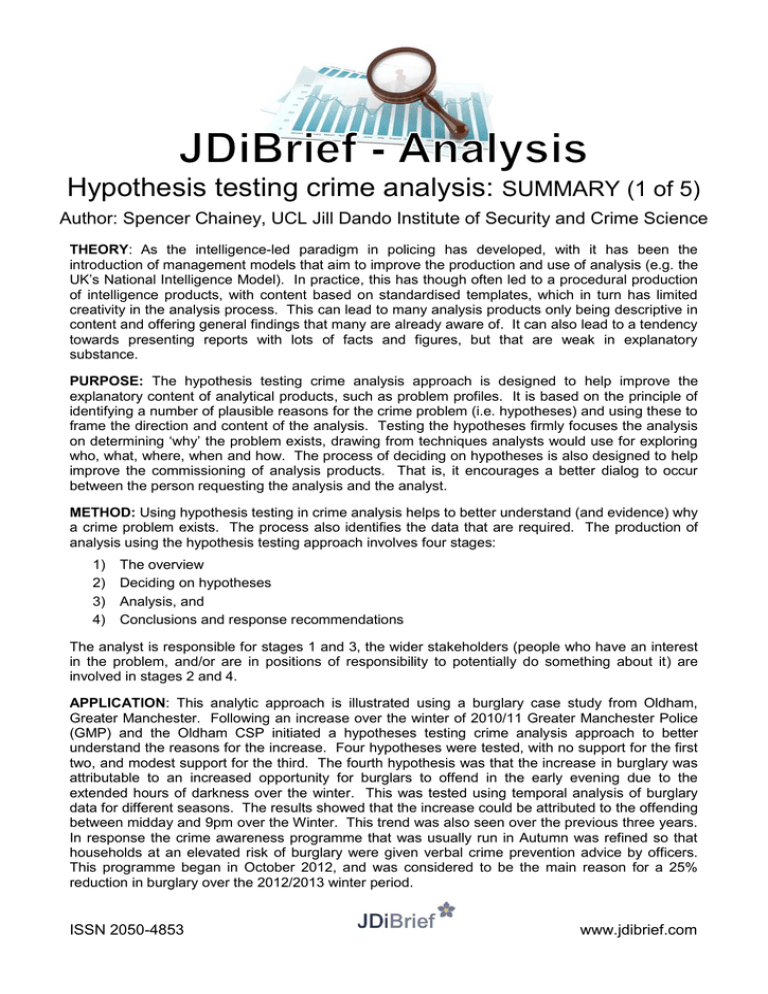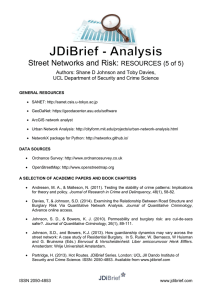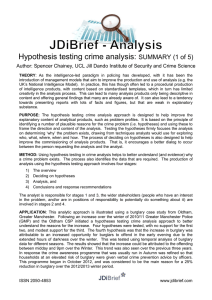Hypothesis testing crime analysis: SUMMARY (1 of 5)
advertisement

Hypothesis testing crime analysis: SUMMARY (1 of 5) Author: Spencer Chainey, UCL Jill Dando Institute of Security and Crime Science THEORY: As the intelligence-led paradigm in policing has developed, with it has been the introduction of management models that aim to improve the production and use of analysis (e.g. the UK’s National Intelligence Model). In practice, this has though often led to a procedural production of intelligence products, with content based on standardised templates, which in turn has limited creativity in the analysis process. This can lead to many analysis products only being descriptive in content and offering general findings that many are already aware of. It can also lead to a tendency towards presenting reports with lots of facts and figures, but that are weak in explanatory substance. PURPOSE: The hypothesis testing crime analysis approach is designed to help improve the explanatory content of analytical products, such as problem profiles. It is based on the principle of identifying a number of plausible reasons for the crime problem (i.e. hypotheses) and using these to frame the direction and content of the analysis. Testing the hypotheses firmly focuses the analysis on determining ‘why’ the problem exists, drawing from techniques analysts would use for exploring who, what, where, when and how. The process of deciding on hypotheses is also designed to help improve the commissioning of analysis products. That is, it encourages a better dialog to occur between the person requesting the analysis and the analyst. METHOD: Using hypothesis testing in crime analysis helps to better understand (and evidence) why a crime problem exists. The process also identifies the data that are required. The production of analysis using the hypothesis testing approach involves four stages: 1) 2) 3) 4) The overview Deciding on hypotheses Analysis, and Conclusions and response recommendations The analyst is responsible for stages 1 and 3, the wider stakeholders (people who have an interest in the problem, and/or are in positions of responsibility to potentially do something about it) are involved in stages 2 and 4. APPLICATION: This analytic approach is illustrated using a burglary case study from Oldham, Greater Manchester. Following an increase over the winter of 2010/11 Greater Manchester Police (GMP) and the Oldham CSP initiated a hypotheses testing crime analysis approach to better understand the reasons for the increase. Four hypotheses were tested, with no support for the first two, and modest support for the third. The fourth hypothesis was that the increase in burglary was attributable to an increased opportunity for burglars to offend in the early evening due to the extended hours of darkness over the winter. This was tested using temporal analysis of burglary data for different seasons. The results showed that the increase could be attributed to the offending between midday and 9pm over the Winter. This trend was also seen over the previous three years. In response the crime awareness programme that was usually run in Autumn was refined so that households at an elevated risk of burglary were given verbal crime prevention advice by officers. This programme began in October 2012, and was considered to be the main reason for a 25% reduction in burglary over the 2012/2013 winter period. ISSN 2050-4853 www.jdibrief.com






